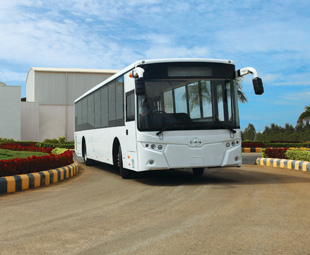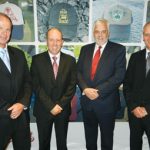UD buses are back

FRANK BEETON reports on important bus news from India, where the return of UD buses will begin
To say that the evolution of the Volvo Group’s global strategy is “interesting” would truly be the understatement of the century! Clearly, some repositioning within this extensive and potentially world-leading family has become necessary to avoid non-productive product overlaps and duplication of effort. The Group includes: Volvo, Mack, UD, Eicher and Dongfeng (the Dongfeng joint venture, which is currently proceeding through a process of regulatory approvals in China, is expected to be finalised in mid-2014).
However, some of the outcomes that are now emerging show a serious degree of lateral thinking, and are sure to keep industry observers very interested in tracing their future progress.
One recent element of the unfolding strategy involves UD buses. The company (that was previously known as Nissan Diesel) halted production of dedicated bus models in Japan during 2010. Previously, Nissan Diesel and UD buses had been successfully marketed in Japan, as well as several South-East Asian export markets, and also South Africa. During the 1970s and 1980s, more than 1 500 CB20 front-engine, ladder-frame bus chassis, with both Nissan Diesel and ADE power units, were sold into this market.
However, the compulsory fitment of local engines, during the 1980s and early 1990s, swung South African preferences firmly in favour of European products and, apart from a brief flirtation with the CB31 successor to the CB20 in the late 1990s, dedicated Nissan Diesel bus chassis have been absent from the local scene in recent years.
An announcement made by the Volvo Group, during March, has not only revived the UD bus brand, but has also raised the possibility that it could become increasingly important in the years ahead.
This time, however, the initial target market will be India, where a range of 12-metre “value” buses and coaches will be manufactured in a joint venture with local company SM Kannapa Automobile Pvt. Limited. The manufacturing facility, located near Bangalore, will have an initial capacity of around 500 units per annum, but is targeted for expansion to 2 000 to 2 500 units.
Interestingly, Volvo’s share in this joint venture is reportedly only 15 percent, but the group will provide technology, design, brand and chassis to the operation, with local content expected to rise, from an initial level between 40 and 45 percent to 80 percent, within a few years.
It was stated clearly in the announcement that India would be the central focus for the UD buses brand, but that export to “growth markets” was also part of the strategy. Volvo’s own premium coaches and city buses have already established a firm foothold in the upper echelons of the Indian market, with some 5 000 passenger units already operational in that country, following initial market entry in 2001. The UD products will be expected to broaden the customer base and market coverage for the Group.
We recently reported on the launch of the new Pro Series of trucks from Volvo-Eicher Commercial Vehicles (VECV) for the Indian and export markets. While no linkage between the new UD bus initiative and the Volvo-Eicher joint venture was apparent from the above announcement, it would be very surprising if power units for at least some the former’s products do not come from the VECV engine plant at Pithampur.
It also seems logical to expect some integration of product support within India (and possible co-ordination of export activities), once the two operations are up to full speed. Given the Indian market’s continued wide-ranging support for front-engined bus products, it will be interesting to see if the new UD buses follow this pattern and, if this transpires, what form future export products will take.
Of course, many South African operators remain firmly wedded to a preference for front-engine bus chassis, so future local opportunities for UD buses remain a fascinating possibility.
Published by
Focus on Transport
focusmagsa




